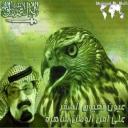Yahoo Answers is shutting down on May 4th, 2021 (Eastern Time) and beginning April 20th, 2021 (Eastern Time) the Yahoo Answers website will be in read-only mode. There will be no changes to other Yahoo properties or services, or your Yahoo account. You can find more information about the Yahoo Answers shutdown and how to download your data on this help page.
Trending News
what causes the "white smoke" trailing high flying jet planes ?
Sometimes you can see it - most of the time not.
9 Answers
- Anonymous1 decade agoFavorite Answer
For the 10,000th time and all the lazy trolls who never do any of their own work:
Little droplets of water, possibly frozen. It's caused by the expansion of bypass air in the engines which cools them.
Modern turbofan (jet) engines actually mix with fuel only a small portion of the air they suck in. The vast majority (90% or so) of air is "bypass air" that is compressed and then used for additional thrust. This air expands as it leaves the engine.
Moist air is in equilibrium between liquid and vapor water. Some water condenses into droplets but some droplets evaporate back to vapor. The addition of cool bypass air shifts the balance in favor of condensation. This creates a visible trail.
Source(s): Naval Aviator - TechwingLv 71 decade ago
The "smoke" isn't smoke, it's water from the engine exhaust condensing in cold air.
All engines that burn petroleum-based fuels (jets, piston engines, etc.) produce steam and CO2 as their exhaust. The CO2 is invisible on exiting the engine and stays that way, but in cold air, the steam condenses into liquid water or ice, forming a white mist that leaves a trail behind the aircraft. This trail is called a condensation trail, or contrail.
Contrails may or may not be visible, depending on atmospheric conditions. They are common above 26,000 feet, but uncommon below. Again, depending on atmospheric conditions, they may be completely absent, or they may disappear after a few minutes, or they may grow into ordinary cirrus clouds.
- 1 decade ago
Little droplets of water, possibly frozen. It's caused by the expansion of bypass air in the engines which cools them.
Modern turbofan (jet) engines actually mix with fuel only a small portion of the air they suck in. The vast majority (90% or so) of air is "bypass air" that is compressed and then used for additional thrust. This air expands as it leaves the engine.
Moist air is in equilibrium between liquid and vapor water. Some water condenses into droplets but some droplets evaporate back to vapor. The addition of cool bypass air shifts the balance in favor of condensation. This creates a visible trail.
not my words taken from source...
- Anonymous5 years ago
It's both a chemical and a physical change. Whenever you completely combust a hydrocarbon fuel, you get two main products..... carbon dioxide and water vapor The water vapor is made in a chemical reaction (burning) inside the jet engine. It's in the form of high temperature steam, though. Once it expands in the high altitude cold air, though, it instantly drops to subzero temperatures. The humid exhaust products condense water vapor to tiny crystals of ice we see as the vapor trail.
- How do you think about the answers? You can sign in to vote the answer.
- ?Lv 51 decade ago
They're called "vapor trails" and it happens when hot gases ejected from inside the plane's turbines causes the water vapor in the air to condense.
- DoplerLv 71 decade ago
It's condensation, water molecules. An artificial cloud.
Basically, the heat from the jet engines cools, and the gaseous water vapour cools into water droplets like a cloud.
- 1 decade ago
the main bi-product of fuel combustion is water. it is vaporized in the engine and condenses when it is exhausted. once condensed it appears as long puffy clouds.
- 1 decade ago
Ever heard of google? This has to be the most over asked question on hear, just search for it!
- ?Lv 41 decade ago
They are spraying chemicals on you, is that what you wanted to hear? Get serious, you know what it is but you just can't handle the TRUTH it's condensation, ice crystals!




